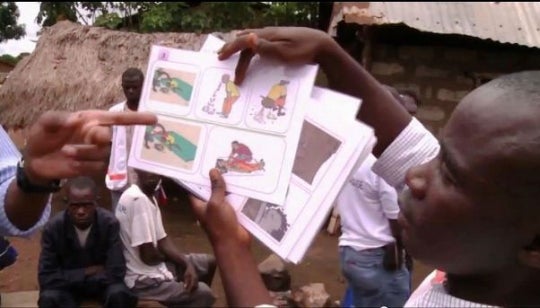
The Ebola outbreak in West Africa started with just one case. More than nine months later, it’s now outrunning the ability of fragile countries and relief organizations in the three most-affected countries to contain it. Clinics and hospitals are overloaded. Sick people are being turned away. Things could get much worse unless something changes.
Thankfully, they are. Momentum is building for a strong international response. The United States announced yesterday it will support the hardest-hit countries with troops, medical personnel, supplies, and construction materials to build hospitals. Doctors Without Borders, the United Nations, the World Health Organization, and donors are involved. The World Bank Group’s board representing 188 nations this week unanimously backed $105 million in grants for supplies and emergency relief and stands ready to do more.
Today, we just completed an analysis of the economic impact of the spread of Ebola in Liberia, Sierra Leone and Guinea. Our findings indicate that if the virus continues to spread, the economic cost to these countries could grow eight-fold by 2015. This would deal a potentially catastrophic blow to their already fragile economies.
Our findings make clear that the sooner we implement an effective response and decrease the level of fear of Ebola's spread, the more we can limit the epidemic's economic impact.
For 2014, we estimate that the GDP losses to Liberia, Sierra Leone and Guinea from this crisis will be a combined $360 million, which is a huge proportion of these very small economies.
Next year, if we implement a rapid and effective response, the combined cost to economic output could be as low as $97 million. But if we do not check the spread of the virus — and that of course will require a massive effort starting right now — the combined cost to growth would rise to over $800 million.
These findings on the Ebola outbreak focus solely on the three most affected countries, but according to our preliminary estimates, the virus' spread to other African nations could cost billions of dollars and depending on the scenario, we think potentially many billions of dollars.
Our economists looked at many factors in making their estimate, including the SARS epidemic from 2002 to 2004. That outbreak caused 800 deaths and cost more than $40 billion in economic losses. We learned from studies that during SARS and the H1N1 outbreak in 2009 that fear and aversion behavior caused as much as 80 to 90 percent of these epidemics' total economic impact.
The fear of contagion has helped fuel an economic crisis within the Ebola crisis as well. There are two kinds of contagion. One is related to the virus itself, and the second is related to the spread of fear about the virus.
Already, the fear factor from the Ebola outbreak has reduced labor force participation, closed places of employment, disrupted transportation, and motivated some government and private decision makers to close seaports and airports.
We know how to contain Ebola's spread. Rapid implementation of effective control measures to prevent the spread of infection and the implementation of effective clinical protocols will limit the loss of lives. It will also stem the tide of fear.
It is very encouraging to see the increased response from international donors, especially President Obama's announcement this week. We really need to scale up our response, and what we have learned from this study is that time is of the essence. We have no time to lose. We have got to get a comprehensive response on the ground as quickly as possible to prevent a possibly eight-fold increase in the economic impact.
This post originally appeared on LinkedIn.


Join the Conversation